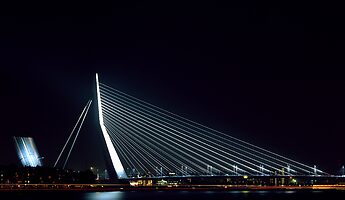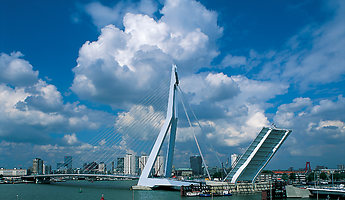On September 6, 1996, Queen Beatrix of the Netherlands officially opened the Erasmus Bridge in Rotterdam. This cable-stayed structure spans 802m across the New Meuse waterway, and with its 139m-high single pylon it has earned the nickname of “The Swan”.
Twenty-five years after its construction, the man behind the bridge, UNStudio’s founder and principal architect Ben van Berkel, reflects on the process of designing this city landmark, which has become an icon of the Netherlands.

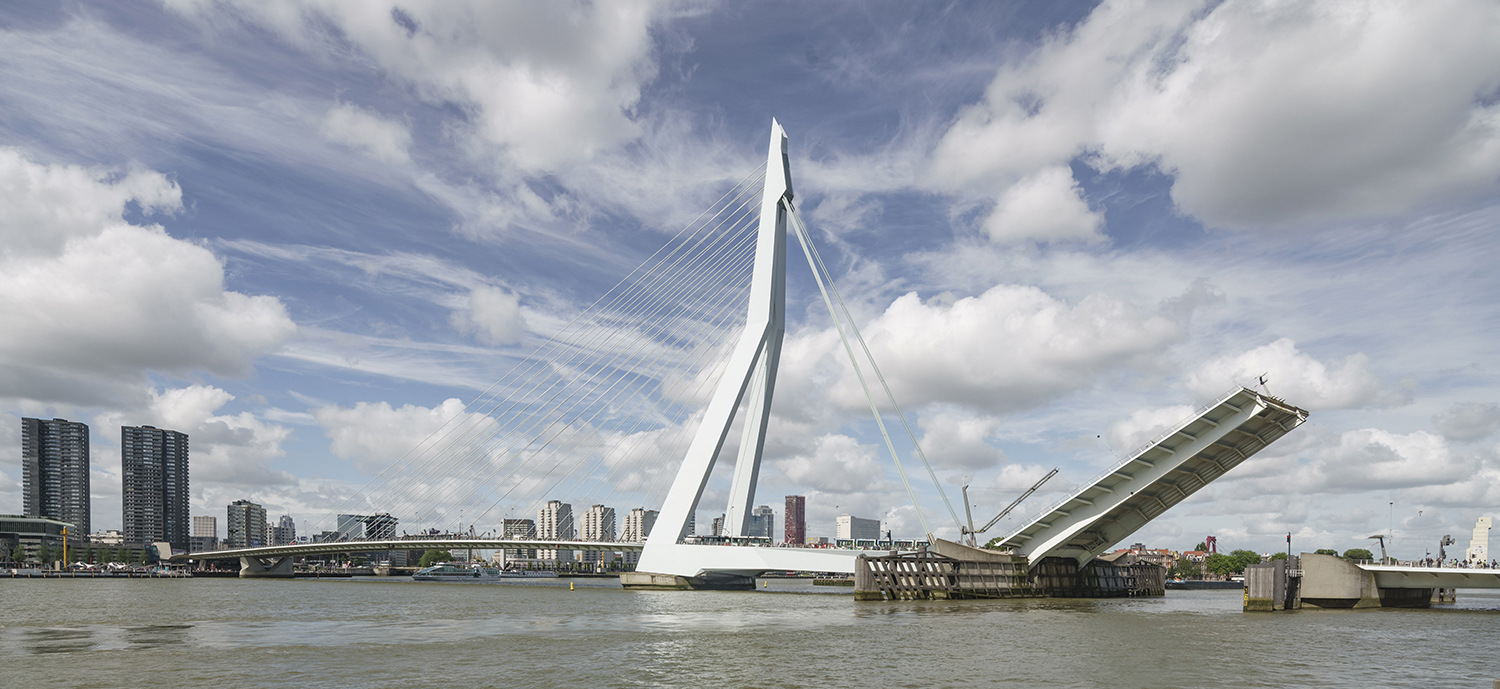
Q&A: Ben van Berkel on Designing the Erasmus Bridge
Q: When you got this commission in 1990, were you surprised?
A: When we received the ‘go’ for the Erasmus Bridge, it was quite an unbelievable shock for me at that time, because I was only 32 years old. I had worked on large-scale projects before, but with other architects. In that time I had a small office, and I had no more than four people who were working with us, so it was a major shock, but exciting!
Q: What was the brief?
A: The client gave a very clear idea of the essence for what this bridge needed to do for this city, and that was to enrich the connection between the city centre [in the north] and the south part of Rotterdam, but also to create a condition whereby this bridge would give the city a new identity.
Q: How did you approach the design process?
A: The process of designing this bridge was connected to many studies we did on site. I rented a bike, I can remember, and I toured around the location. I made many sketches, and I think I stood at close to 12 locations in order to understand in which way, in what experience, in what view you would see this bridge. In the end, when the politicians in Rotterdam decided on [the design for] this project, the essence was that they liked the idea that this bridge was pulling the north side to the south side. It was almost as if they saw the bridge as a bow.
Q: The single pylon design quickly earned the bridge the nickname of “The Swan”, but in fact is it meant to symbolise a bow?
A: The Swan was the cities interpretation, or the public’s interpretation. The bow came from the idea of how the construction worked, because from the angled form, people thought that it was more or less playing with this idea of the bow. It was not only a visual idea, but it was also a highly constructive idea. Through the angled form, there is a curved force in a bow-like structure that carries the enormous length of the bridge, because the ratio between the height of the bridge and the length of the bridge is quite unusual.
Q: Was the single pylon idea there from the very start?
A: The single pylon idea was there from the beginning onwards, because I thought that it needs to be supporting how it pulls the north to the south. And that’s why I didn’t go at the time for a four-pylon or two-pylon structure. The pylon in its original design was much higher, but through the bow we could make it smaller and carry the full-length of the bridge we designed.
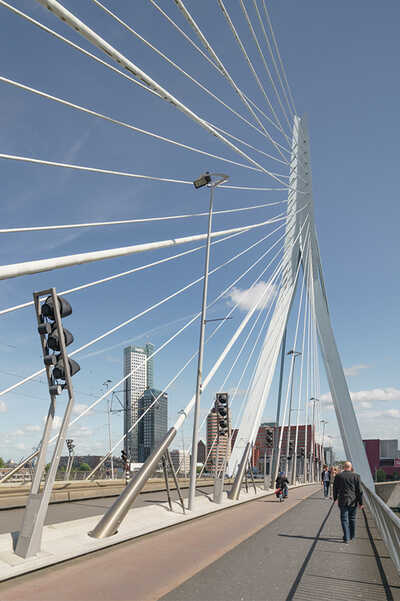
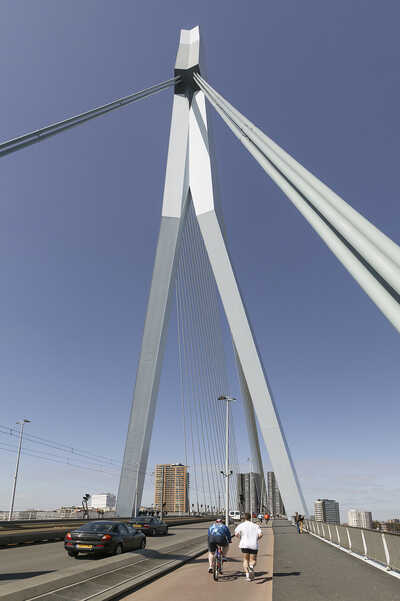
Q: To the public it’s “The Swan”, to the local politicians it was “The Bow”. What do you see the bridge as?
A: When I was doing my initial tour around the location, I discovered that there were so many cranes and so many robust objects to be found in [Rotterdam’s] harbour. So maybe the bridge refers more to that robustness and the industrial quality of the city of Rotterdam, than say “The Swan” that everyone refers to [it as].
Q: Did you know it would become such an icon?
A: What happened with the Erasmus Bridge was something I could not fully predict, that it would be embraced by so many people. It’s very strange, I never feel so emotional about the fact that this bridge became such a fantastic icon. I’m more emotional about - and excited about – the fact that this bridge became the bridge of others. Suddenly you see the bridge being supported almost as a Dutch symbol, not only for the city of Rotterdam, but also for Holland, and this is something I never predicted.
To explore the Erasmus Bridge design in more detail, click here.
Photos: Ronald Tilleman
